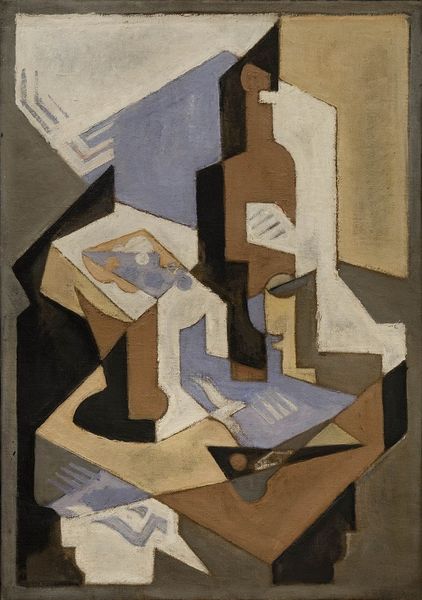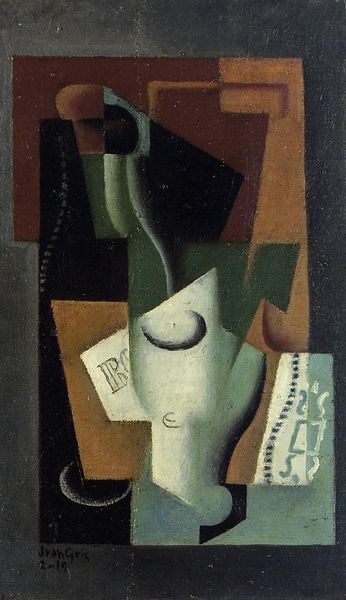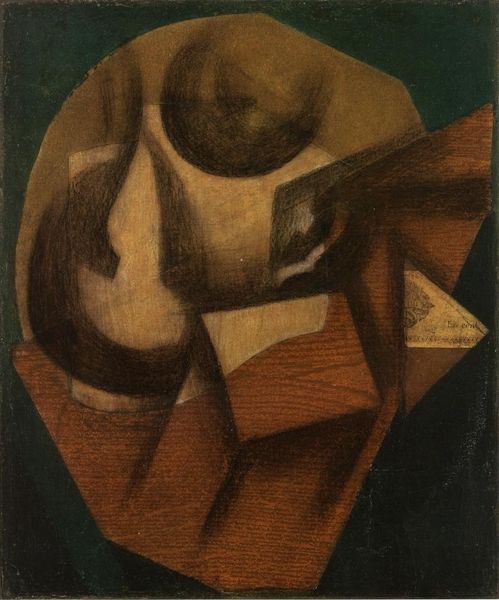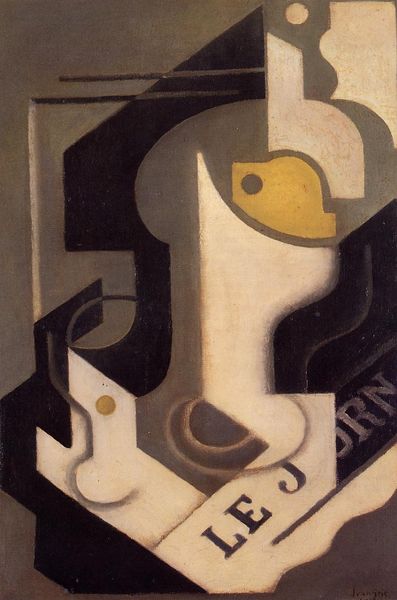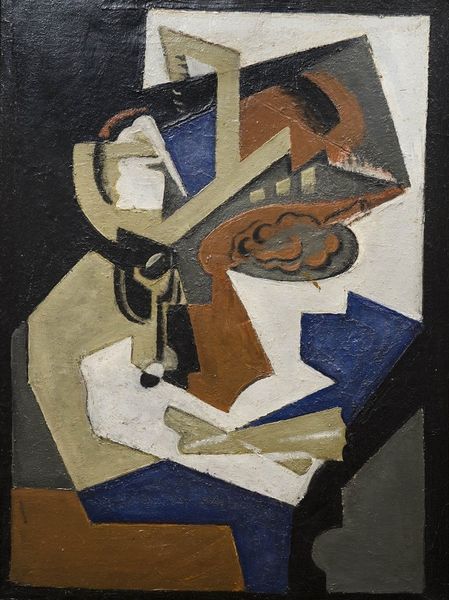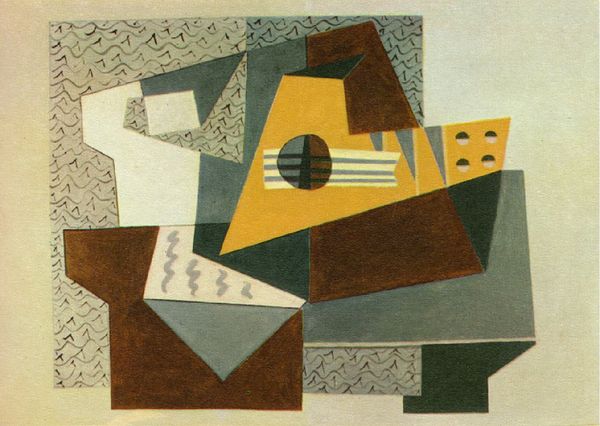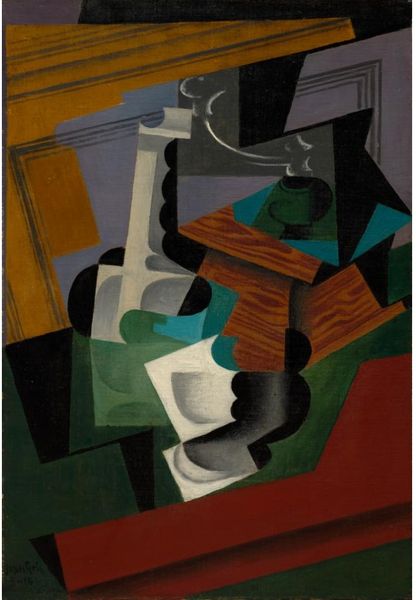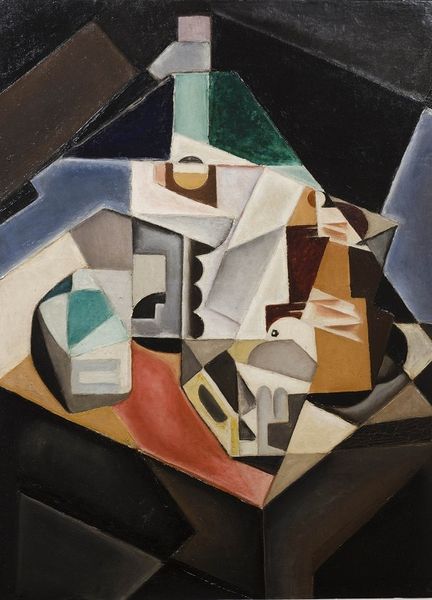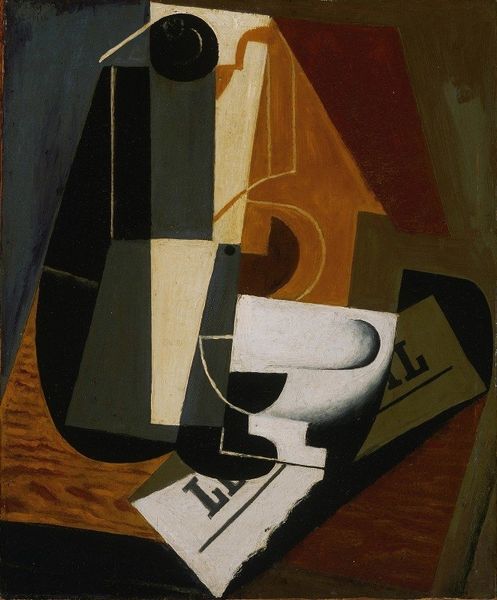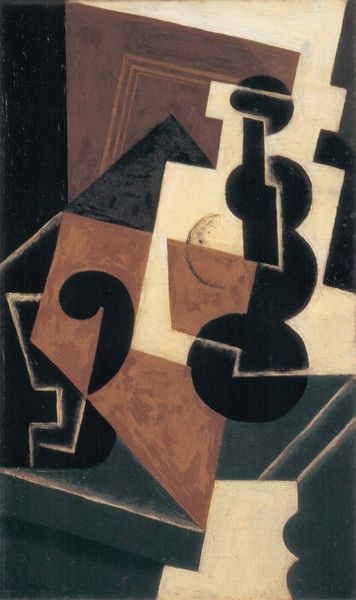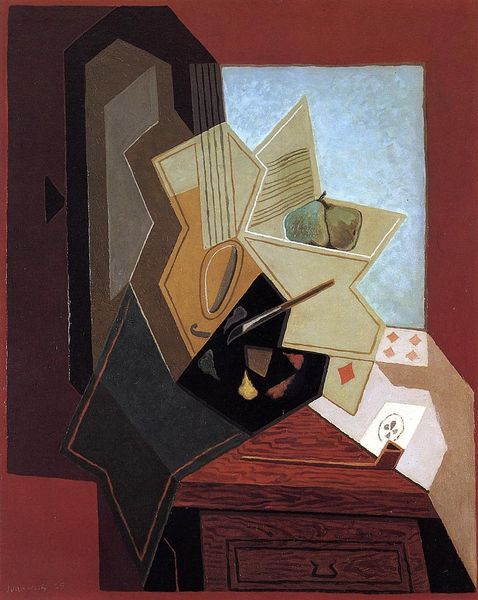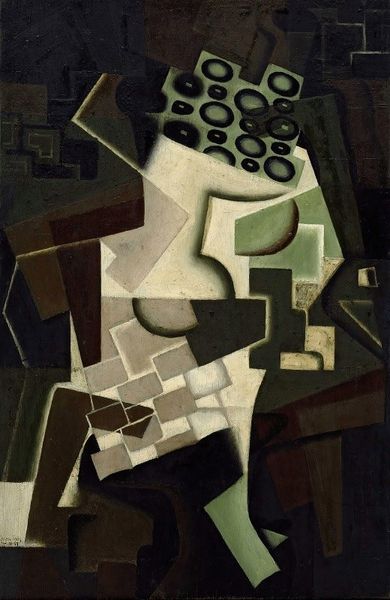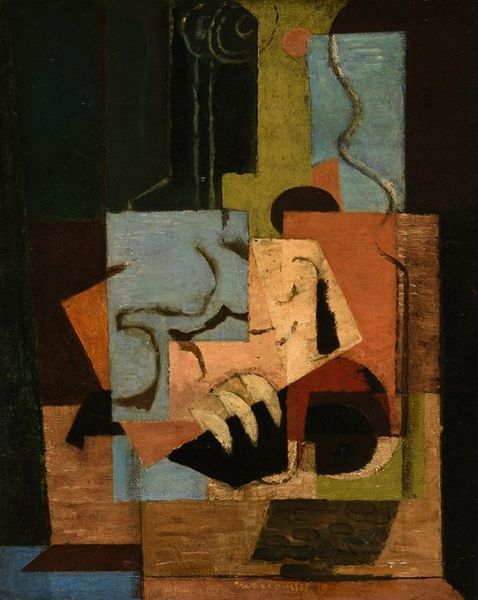
painting, oil-paint
#
cubism
#
painting
#
oil-paint
#
oil painting
#
geometric
#
modernism
Copyright: Public Domain: Artvee
Curator: Immediately, the sharp angles strike me. There’s a deliberateness to the geometry that's almost…clinical. Editor: Well, let's contextualize that reaction. This is "Dish of Fruit," painted by Juan Gris in 1916. As an oil painting, it stands as a key work from his Synthetic Cubist period. Curator: Synthetic is the right word. Gris isn't just breaking down form like earlier Cubists, he's actively reconstructing it. I see the flattening of space, sure, but also how he plays with perspective—the tabletop plane is tilted vertiginously! Editor: Indeed. It pushes our understanding of how still life paintings operated, doesn't it? Think about the physical act of preparing the oil paint. Grinding the pigments, mixing the oil, layering and layering, perhaps reworking the geometrical components here to suggest various planes... the materials were very tangible in the making. Curator: And notice how the colors, though subdued, serve to further dissect the image. The browns, blacks, whites are clearly differentiated with very few tonal graduations, setting a visual rhythm across the composition. These color shifts demarcate shapes without actually defining them. Editor: I appreciate the point regarding color. However, look more closely at Gris's visible brushstrokes. They are intentionally apparent, rejecting smooth or invisible mark-making. Perhaps we are meant to question not only pictorial illusionism but also how and what materials are capable of constructing artistic meaning. What kind of brushes might Gris have used to attain this distinct look? Curator: Perhaps, but in breaking down and synthesizing the image into near-abstract forms, it creates an internal logic independent from observed reality. The very grid structure—or perhaps armature would be more appropriate here—dictates the composition’s order. Editor: This “armature” emerges, too, out of certain constraints given to the laborers preparing raw resources—brushes of varied construction from coarse animal hairs to polished wooden frames for easel painting! "Dish of Fruit" serves, however, as one specific artifact rising above these basic concerns. Curator: Quite true, and seeing Gris masterfully balance such calculated formalism, to ultimately evoke that feeling of simple joy, or comfort— that is nothing short of sublime. Editor: Yes. It is the nature of labor embedded in Gris’ material process that elevates the everydayness of humble "Dish of Fruit". An aesthetic and thought provoking material feat, to be sure.
Comments
No comments
Be the first to comment and join the conversation on the ultimate creative platform.
